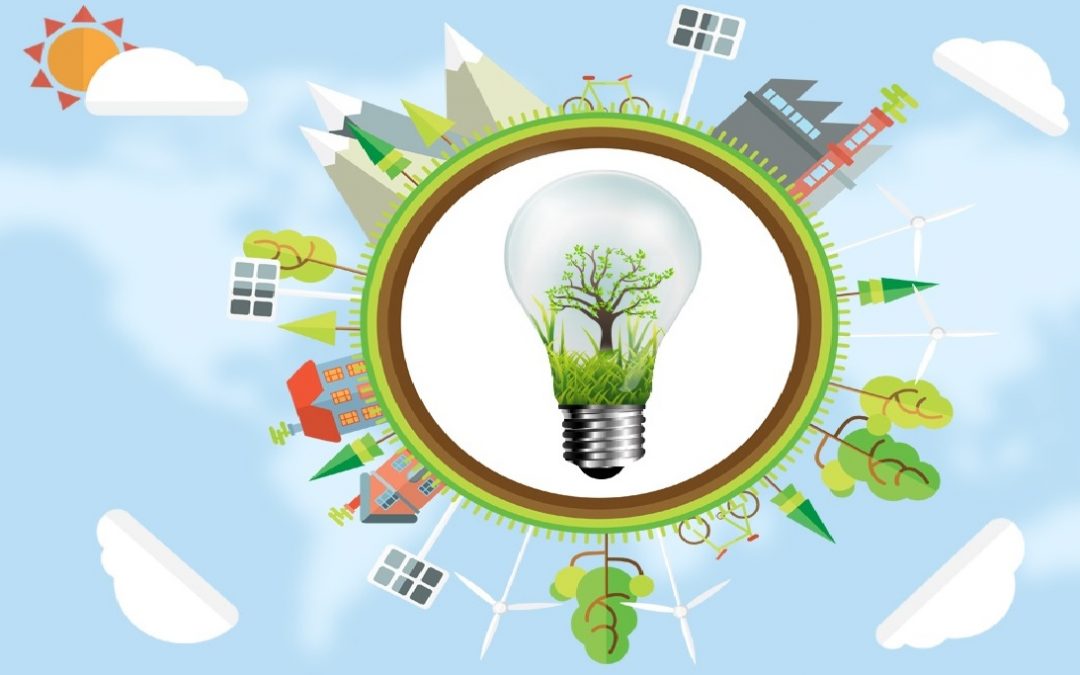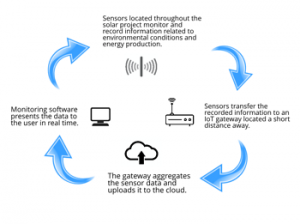Solar energy is a renewable source of energy created by utilizing the bright light and heat from the sun using a variety of ever-changing technologies such as solar heating, solar thermal energy, photovoltaic’s.
Internet of Things (IoT) is the interdependence of computing devices implanted in everyday objects with distinctive identifiers and the ability to transfer data over a network without the need of a human to human or human to computer connection.
Applications of IoT in solar energy
Solar energy is the fastest and one of the most efficient and profitable renewable energy sources in the market is becoming increasingly popular as more energy companies are growing to offer this renewable source of electricity. Utilizing IoT in solar energy production includes sensors attached to the transmission, generation, and distribution equipment which help companies to observe and manage their equipment from a distance without physical contact. The use of IoT in solar energy has many benefits for companies as it reduces operational costs and due to the reduced use of fossil fuels the company may be viewed as being environment friendly thus increasing its popularity and demand for its services.
Benefits of using IoT in solar energy
By using an all-in-one edge-to-cloud IoT solution to connect all your solar assets you can see what is happening to your assets in real-time from the control panel and by connecting all the devices to the cloud network any problem that may occur can be identified and alert signals can be sent to operators and these problems can be fixed before it disrupts the entire system, reducing costs. By placing sensors along the distribution channels and substations companies will be able to gather real-time power consummation data which will help them to make decisions about the load, voltage, and power being supplied. The power distribution companies can regulate and study the user consumption patterns using the IoT generated data to improve their services by supplying electricity according to consumer demands. This will reduce electrical wastage and will save a lot of money. In times of technical problems, real-time data can help workers turn off the power supply to damaged lines which can prevent any disasters from taking place such as electrocution, fires, destruction of other equipment, etc. further reducing costs. Using automated IoT system smart switches can cut off problem areas automatically and the IoT devices can reroute the electricity to get the lights back on swiftly. And with the generation of real-time data, the company can make decisions on whether to expand the business or upgrade existing devices.
Challenges faced with IoT
Although the use of IoT in renewable sources of energy development provides a variety of benefits it is not without its drawbacks and barriers. There are a lot of intricate applications which require considerable infrastructure to process and transmit data produced and to integrate it into the system. The cellular modules, gateways, and web platforms all need to be integrated properly without any breaks in the system and proper security measures need to be undertaken to prevent being hacked into. Furthermore, renewable energy keeps changing depending on the weather and environment soothe power grid needs to adapt to these changes efficiently to ensure the maximization of grid usage. Even though the setup costs have dropped from previous years the initial investment cost is still high.
Conclusion
Even though some challenges and problems do exist they should not be discouraging for solar companies as these problems can be fixed and overcome easily with little effort and investment. Another important aspect is to eliminate complex hardware integration, certification, and security concerns and allow the business to run smoothly with access to operational data being gathered in the cloud infrastructure and integrate it with the IT systems. The data from the cloud can then be used to deal with problems quickly and effectively without trying to find it out from thousands of panels saving on time and money as IoT will already find it out and send alerts directly to the operators. Consumer usage can also be studied to make improvements in services. Electrical wastages will be reduced and will be more efficient thus cutting costs for the business. All the data gathered can be used to make important business decisions increasing overall profit for the company using IoT.
References
- Jones, S. (2018). Solar Power for Commercial IoT. PoweFilm.
- Amiot, O. (2019, November 07). Sierra Wireless. Retrieved from Sierra Wireless: https://www.sierrawireless.com/iot-blog/iot-blog/2017/12/the_future_of_iot_in_solar_energy_how_innovative_technology_is_expanding_the_solar_sector/
- Joshi, N. (2019, October 24). Allerin. Retrieved from Allerin : https://www.allerin.com/blog/the-use-of-iot-in-renewable-energy-generation


